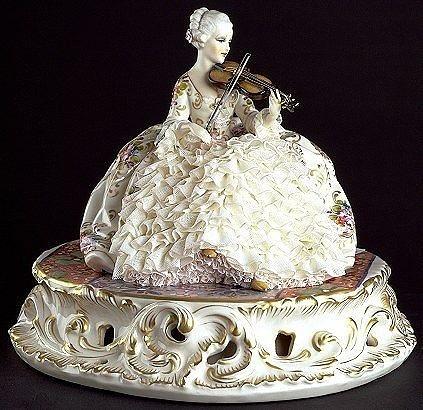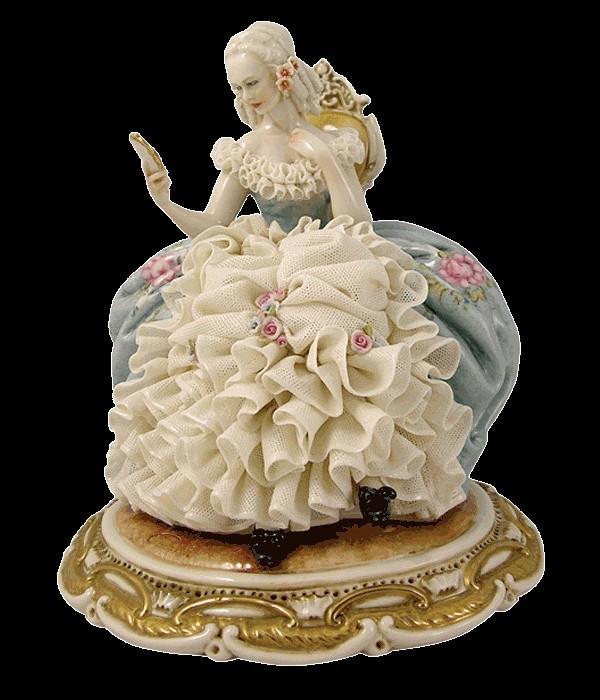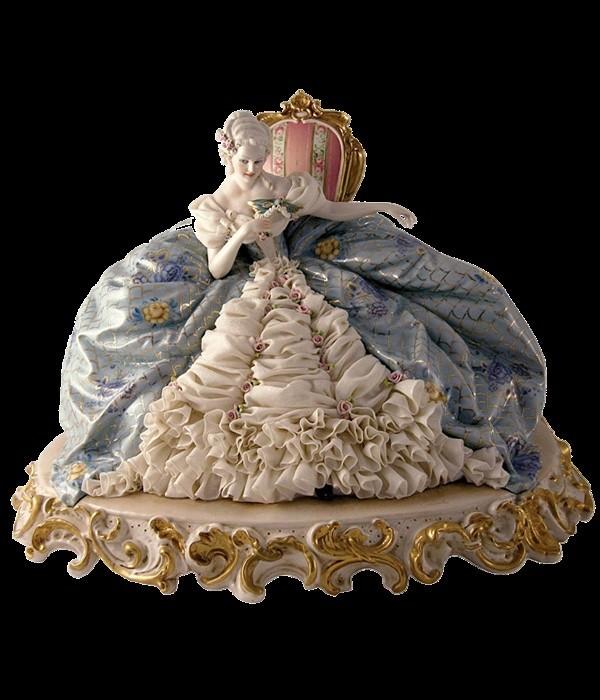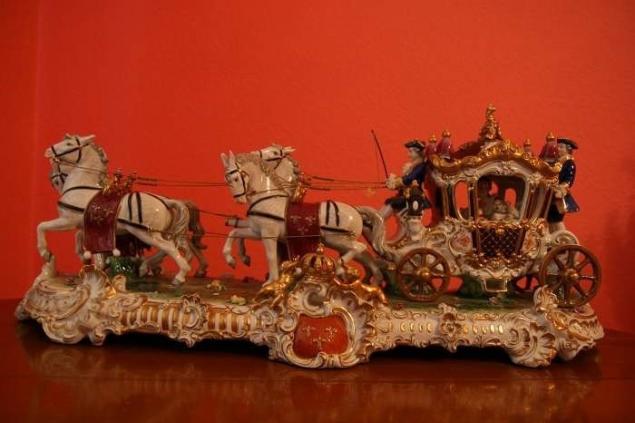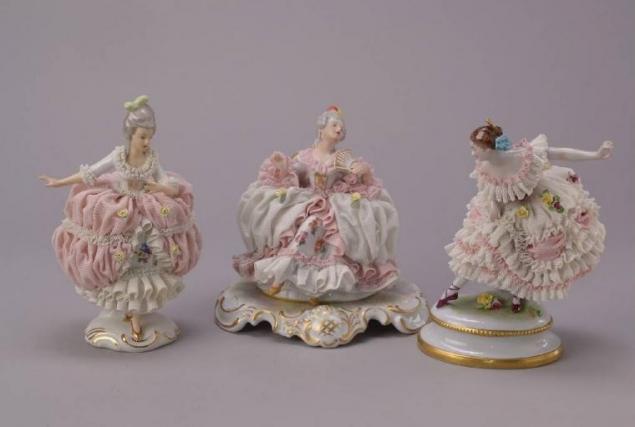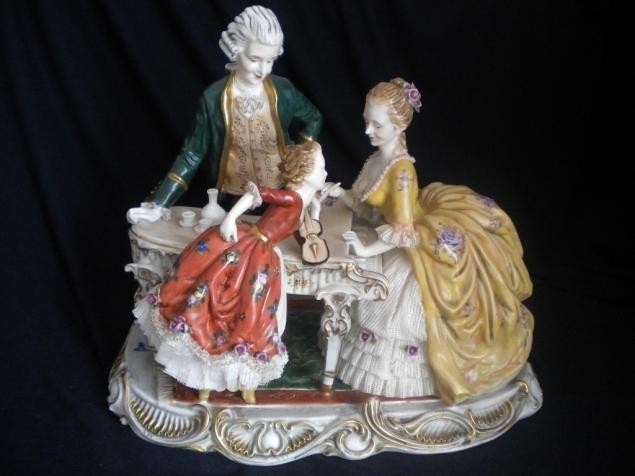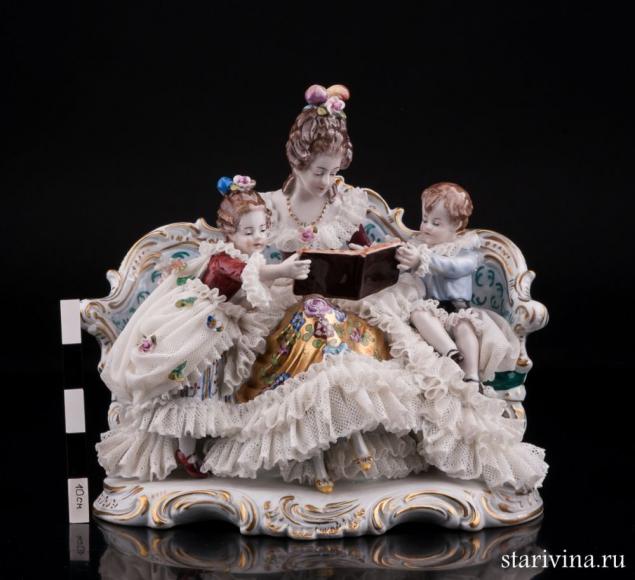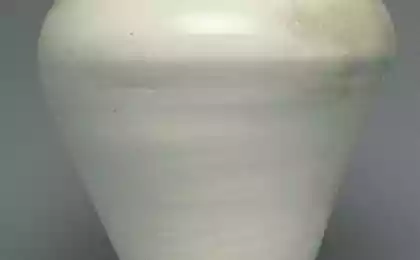2426
Dresden Lace Porcelain - frozen and very expensive miracle ....

His name was laced porcelain due to the ease and grace, as well as similarities with the present ruching. Most often laced porcelain figurines appear to us as girls and young women, often dancers or dancers in lush, airy dress, which consists of fine lace with fine, small holes. A specially selected soft colors such as pink or blue, make these figures even more light, soft and weightless. In his unique and unusual, they are highly valued throughout the world.
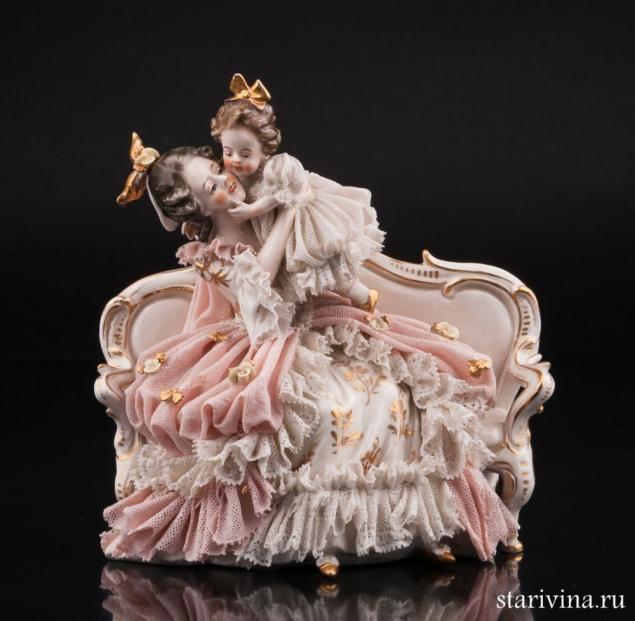
These thin porcelain figurines are made by a process known as draping lace. He turns the delicate lace and other x / cotton fabrics in china. Fabric draped hand, then dipped in porcelain slip and after heat treatment are transformed into delicate porcelain patterns!
The process is believed to have been developed in ancient China, where the used floss. However, the most famous example is the Dresden Porcelain - after the city where it was invented, and where at one time there were many factories use this technique.
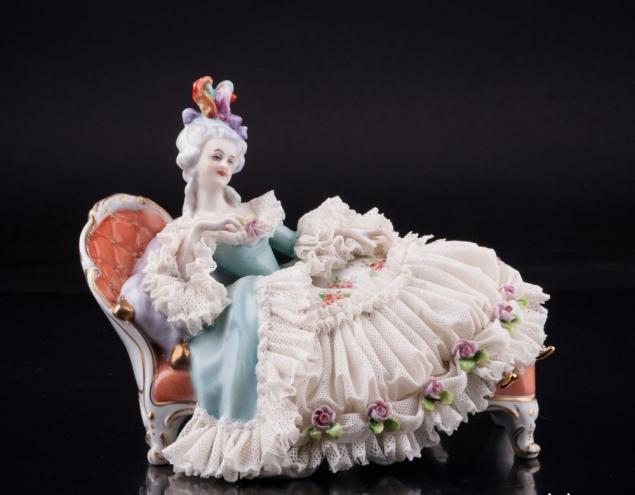
Dresden lace began to produce in the late 18th and early 19th century. But because of the imperfection of manufacture (insufficiently high firing temperature) delicate lace were quite brittle and break at the slightest touch. That's why lacy porcelain that time so little, and it is so expensive, almost every figurine is "chipped" - victims of time and mechanical impacts lace dresses.

Today, when you create a "lacy" figurines using real lace, which is impregnated with a porcelain mass (each manufacturer a secret special mass for the impregnation and further strength) and then more wet attached to the sculptures. The kilns at temperatures over 1300 degrees textile base burns and porcelain lace remains forever.
